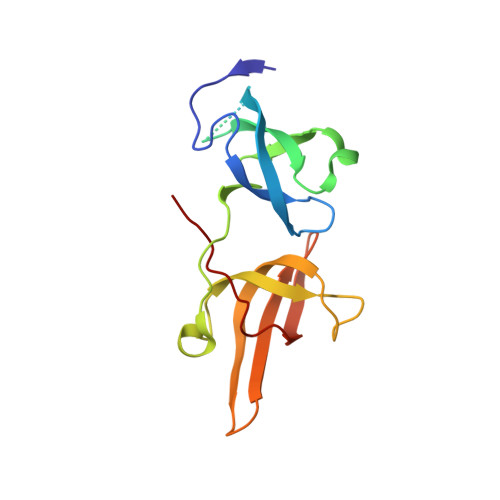Discovery of Small-Molecule Antagonists of the H3K9me3 Binding to UHRF1 Tandem Tudor Domain
Senisterra, G., Zhu, H.Y., Luo, X., Zhang, H., Xun, G., Lu, C., Xiao, W., Hajian, T., Loppnau, P., Chau, I., Li, F., Allali-Hassani, A., Atadja, P., Oyang, C., Li, E., Brown, P.J., Arrowsmith, C.H., Zhao, K., Yu, Z., Vedadi, M.(2018) SLAS Discov 23: 930-940
- PubMed: 29562800
- DOI: https://doi.org/10.1177/2472555218766278
- Primary Citation of Related Structures:
5XPI - PubMed Abstract:
Ubiquitin-like with PHD and RING finger domains 1 (UHRF1) is a multidomain protein that plays a critical role in maintaining DNA methylation patterns through concurrent recognition of hemimethylated DNA and histone marks by various domains, and recruitment of DNA methyltransferase 1 (DNMT1). UHRF1 is overexpressed in various cancers, including breast cancer. The tandem tudor domain (TTD) of UHRF1 specifically and tightly binds to histone H3 di- or trimethylated at lysine 9 (H3K9me2 or H3K9me3, respectively), and this binding is essential for UHRF1 function. We developed an H3K9me3 peptide displacement assay, which was used to screen a library of 44,000 compounds for small molecules that disrupt the UHRF1-H3K9me3 interaction. This screen resulted in the identification of NV01, which bound to UHRF1-TTD with a K d value of 5 μM. The structure of UHRF1-TTD in complex with NV01 confirmed binding to the H3K9me3-binding pocket. Limited structure-based optimization of NV01 led to the discovery of NV03 (K d of 2.4 μM). These well-characterized small-molecule antagonists of the UHRF1-H3K9me2/3 interaction could be valuable starting chemical matter for developing more potent and cell-active probes toward further characterizing UHRF1 function, with possible applications as anticancer therapeutics.
- 1 Structural Genomics Consortium, University of Toronto, Toronto, ON, Canada.
Organizational Affiliation:

















